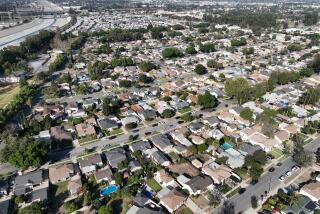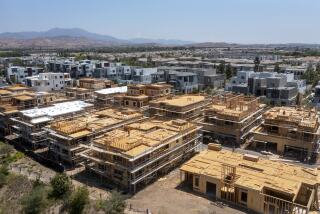Searching for Greener Grass
- Share via
Footloose Americans are constantly in search of the perfect city. San Francisco and Boston always have been popular. Atlanta was hot early this decade. Houston hustled. Denver blossomed at the foot of the Rockies, and busted. Everyone loves San Diego. Now Seattle is the hot American spot for young professional couples.
An estimated 50,000 new residents are arriving each year in thriving metropolitan Seattle, the jewel city on Puget Sound in the imposing shadow of Mt. Rainier. As The Times’ David Lamb wrote this past week, everything seems to have fallen into place for Seattle: a magnificent natural setting, economic opportunity, lively arts and culture, amenable climate and a lack of pretension. Too good to be true? Ah, perhaps.
Inevitably all this growth is breeding discontent. Traffic is getting congested. Housing prices are soaring. Pollution is increasing. People are talking about growth control and building-height limits downtown. Seattle is suffering the growing pains and self-examination that earlier hit San Francisco, Los Angeles and others.
The Seattle situation raises the question: Can any American city make itself so attractive to newcomers and still manage its destiny so that the original attractiveness is not destroyed, or at least dimmed?
There is no perfect city. But factors that make a city an attractive, livable place include a healthy economy, reasonable housing, good schools, low crime rate, a pleasant climate and cultural and recreational opportunities. Medium-size cities like Madison, Wis., or Austin, Tex., that have a major university or the state capitol have become popular. And, generally, Americans are flocking to the coastal regions.
How big is big enough? A longtime resident of Seattle, or Sacramento or Phoenix, who can remember when the town was just the right size may complain that the city has grown too large and congested. But a newcomer from New York or Los Angeles may marvel at the relatively wide open spaces and lack of traffic, even if he can’t find a decent deli.
For all the talk of planning and growth control, economics remains the driving force in the development of American cities, much as it was in the 19th Century. Most people move in pursuit of better jobs. Jobs beget more jobs. A thriving economy attracts more business. Local governments that depend on an ever-expanding tax base are reluctant to restrain growth in any way. Intense intercity competition for economic development discourages rational planning and allocation of sufficient resources for amenities like parks, cultural activities, open space and limits on automobile use.
In frontier days a man moved on when the town got too big for him, or the gold was panned out. Today some still do that. But many don’t have that sort of footloose freedom.


